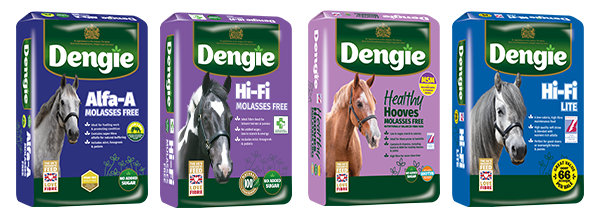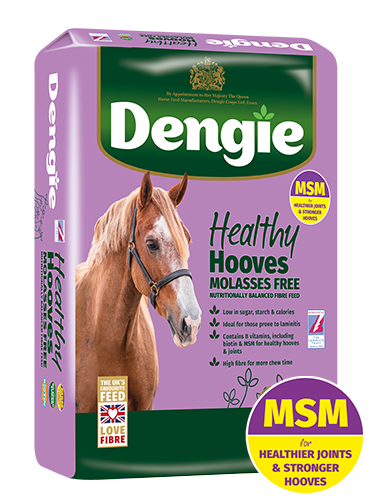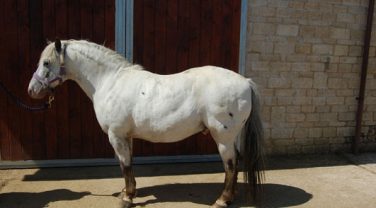Laminitis explained
Article last updated: 17th May 2022
Our understanding of laminitis has evolved over recent years. Whilst many people think fat ponies grazing lush pasture are the typical laminitis candidates, in practice, any individual can be affected including top level sports horses and even those that are underweight.
What causes laminitis?
Once thought of as a disease in its own right, laminitis in horses is now known to be a symptom of an underlying health problem, particularly the endocrine problems Equine Metabolic Syndrome (EMS) and Pituitary Pars Intermedia Dysfunction (PPID) previously known as Cushings Syndrome, which are associated with insulin dysregulation.
Horses with underlying insulin dysregulation have an abnormal response when they consume non-structural carbohydrates (NSC – the sum of water-soluble carbohydrate, which is sugar and fructan, plus starch added together). Under normal circumstances eating NSC results in an increase in blood glucose levels. The body concurrently releases insulin to control levels of glucose in the blood so eventually levels of both glucose and then insulin return to normal. Individuals with insulin dysregulation can have higher resting levels of insulin in their blood, known as hyperinsulinaemia, and then may experience a very exaggerated or prolonged response to the intake of NSC. It has been shown that hyperinsulinaemia itself can be enough to trigger laminitis without an accompanying high intake of sugar and starch.
Signs of Laminitis in Horses
Being overweight or sudden weight gain significantly increases your horse or pony’s risk to laminitis – take action now to maintain your horse at a healthy weight!
The classic symptom of a horse rocking back on to their heels is one of the most recognisable signs of laminitis in horses, but the disease has progressed quite significantly by the time this is apparent. Early signs of laminitis can be mild lameness which is sometimes referred to as “being footy”, heat in the feet and a bounding digital pulse. Taking action early can help the long term prognosis so if any of these early signs of laminitis are apparent in your horse or pony it is vital to contact your vet.
Managing Laminitis Risk
Addressing the underlying endocrine problem is key and in the case of EMS, a weight loss plan is vital. The key feeding priorities for managing laminitis risk in laminitis prone horses and ponies with underlying endocrine issues are:
- Keep them at a healthy weight
- Manage intake of sugar and starch
Whilst not all overweight individuals go on to develop laminitis, there is a link between obesity and the worsening of insulin dysregulation. Those that are overweight can be at higher risk of laminitis and require a change in diet to promote weight loss and an accompanying increase in exercise, where possible, will help too. If weight loss is achieved insulin regulation should return to normal although this isn’t always the case. If a horse or pony doesn’t respond to weight loss then there is no evidence that continuing to promote weight loss to the point that the horse is significantly underweight is beneficial and the overall welfare of the animal should be considered.
When it comes to weight management, one key piece of advice is to allow or encourage your horse to lose weight in winter. This puts them in a better position come spring/summer when calorie intake increases with grazing and helps to avoid year on year weight gain.
When it comes to reducing NSC intake, this is very easy to achieve in the bucket feed. Simply avoid using any cereal based concentrate feeds in favour of high fibre, low sugar and starch feeds of an appropriate calorie level that are marketed to the laminitis prone individual. Dengie have a range of products that are low in sugar and starch making them ideal for the laminitis prone individual to aid with managing laminitis risk.

Less easy to control and predict is the NSC coming from grazing and forage. For some individuals, despite being a healthy bodyweight, their insulin regulation may still be abnormal making access to grass far more likely to trigger laminitis. Some individuals may not be able to return to grass and require turnout on a no-grass area with supplementary forage as an alternative. For those that can return to grass they will need to be monitored closely and grazing restricted or removed completely in spring and autumn. These are the times when grass is growing rapidly and so there is a lot of grass for a horse or pony to eat. There are times when grass is under stress such as during a drought and in bright, frosty conditions when the concentration of NSC within grass increases. These can also be higher risk times for laminitis.
During any laminitis episode your horse or pony will need to be stabled and so conserved forage will be required to replace the grass. This can be highly variable in NSC content and so there are some top tips to follow to try and source the right forage for your horse or pony. For the good do-er a late cut hay is likely to be lower calorie than an earlier cut hay or haylage. The more like straw a hay looks, the more like straw it is likely to be in terms of NSC and energy levels. Coarse, stalky hays are generally better for good doers.
The only way to know how appropriate any forage is for the laminitis prone individual prior to purchase is to get it tested. Ideally you are looking for forage with less than 10% water soluble carbohydrate (sugar and fructans) and starch combined which can be very tricky to find. Additionally you could consider soaking the forage to leech out some of the water soluble carbohydrate. This can have variable results according to the duration of soaking, water temperature and also potentially the volume of water used. During cooler conditions a longer soak will result in greater losses, whilst in summer soak time should be short to avoid rapid deterioration in the hygienic quality of the forage.
For friendly feeding advice complete our Feed Advice Form or call the Feedline on 01621 841188.



